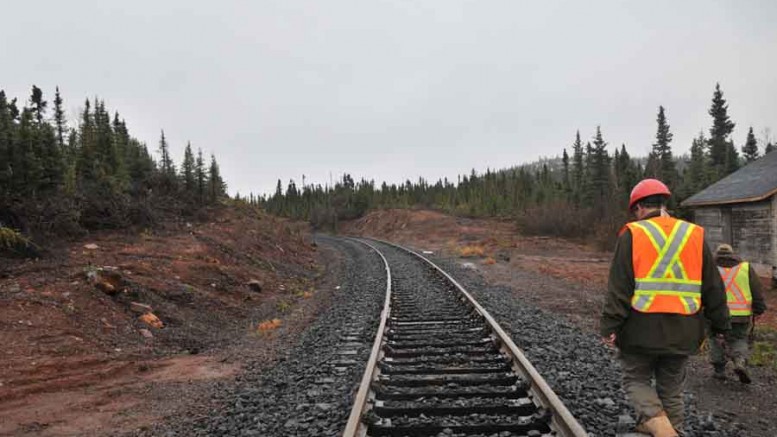Despite having the distinction of being Canada’s newest and only independently owned iron ore producer, Labrador Iron Mines(LIM-T) has been on a rough ride over the last while.
In April 2011 the company’s stock was trading in the $14 range. It began 2012 trading in the $5 to $6 range, by August its highest close was $2.17 and on Oct. 2 the company’s maligned stock finished the day trading for just $1.01 — off 10% from its close the day before.
The latest drop came after it announced an equity financing deal that would raise $30 million for working capital and general corporate purposes, but dilute current shareholders to the tune of 30 million new shares.
This represents a 34% increase in paper over the previous 67.3 million shares outstanding, which had analysts lowering company price targets.
Haywood Securities analyst Colin Healey, for one, revised his target to $2.40, from $4.70 per share.
“Labrador Iron Mines is in the middle of a difficult iron ore market, as current iron ore price levels exert margin pressure on LIM and threaten to reduce realizable cash flow from sales,” Healey writes in a research note.
Healey also pointed out that the equity issuance price of $1 per share is a 31% discount rate to LIM’s 20-day, volume-weighted average price of $1.44, and an 11% discount rate to the price announcement of $1.12.
The monumental slide in the company’s market capitalization has come amidst steep declines in iron ore prices, which accelerated after the company reached commercial production at its James Mine and Silver Yards processing plant.
The company’s plan has been to generate 2 million tonnes of production from James, and reach second-stage development by mining its flagship Houston deposit before mid-2013.
Houston has measured and indicated resources of 23 million tonnes grading 57.2% iron, and is expected to add over 2 million tonnes of iron ore production per year over a 15-year mine life.
But with the typical price of iron ore falling roughly 30% to below US$90 per tonne in August, LIM has held off on its bold development plans.
In September the company announced that capital expenditures for the Silver Yards processing plant and mining at the Houston deposit have been deferred, and that its 2012 exploration program was being cut to $5 million from $8.6 million.
It also halted its higher-cost wet processing plant at Silver Yards, and will instead use its lower-cost dry-processing system. Ore from James is soft and high grade, which allows a simpler processing system that doesn’t need washing. The dry process stream has a design capacity of 20,000 tonnes per day.
The steep fall in iron ore prices in August was connected to reduced demand from China after steelmakers went on a “buyers’ strike” and liquidated inventories.
The company says it expects a rebound in iron ore prices, which is supported by Haywood’s Healey, and indicated by the product’s minor, recent price recovery to US$106 per tonne.
LIM says that the recent destocking by Chinese steel producers can’t continue indefinitely, and that buyers will return to the market. It also argues that with Chinese import prices well below the marginal cost of Chinese production, there is an implied floor on the price of iron ore of US$120 per tonne.
Healey expects that iron ore prices will average out at US$118 per tonne next year.
On a more positive note, the company has reached an agreement with the Sept-Îles Port Authority that will allow access to a minimum 5 million tonnes of annual capacity, at a cost of $12.8 million.
But if iron ore prices don’t recover, it may not use half of its allotment. Without Houston coming on stream, Healey estimates, LIM could produce 2 million tonnes of iron ore from James for five years.


Be the first to comment on "Labrador Iron falls on hard times"